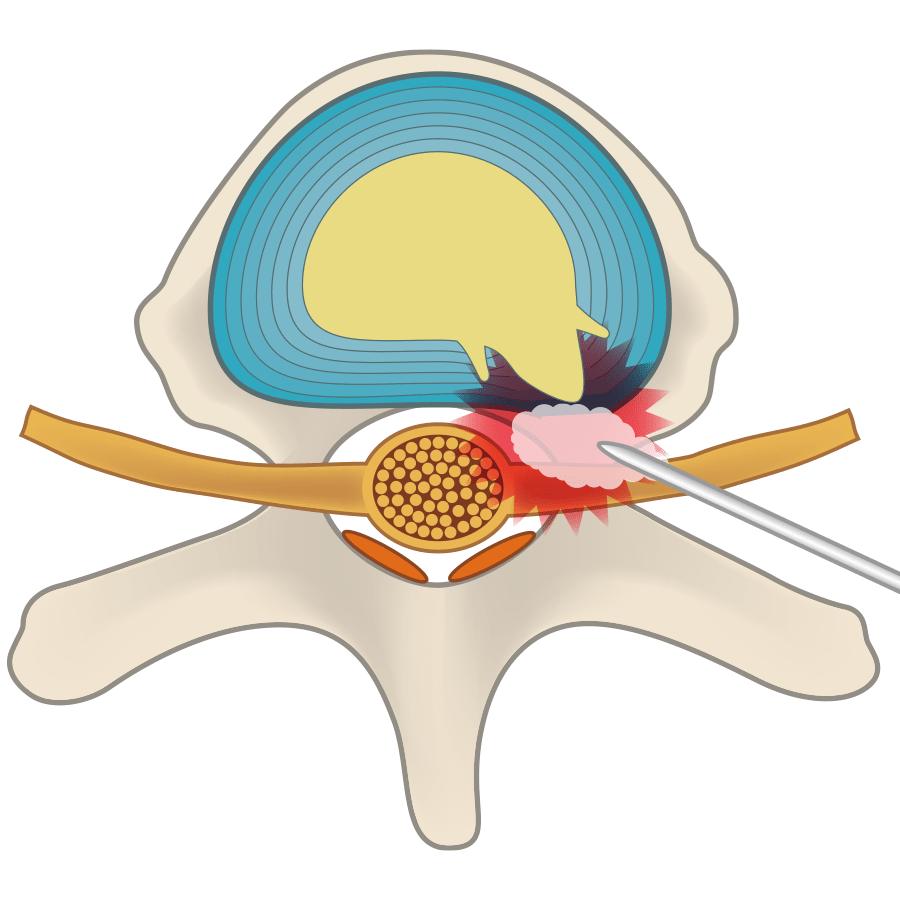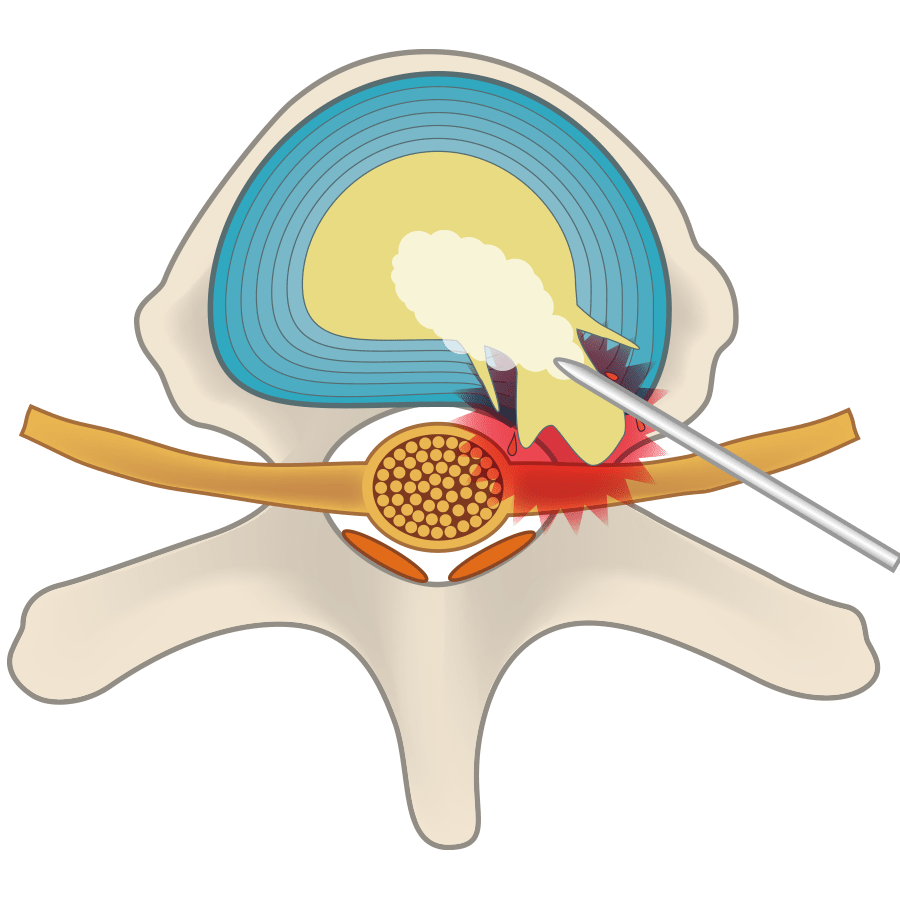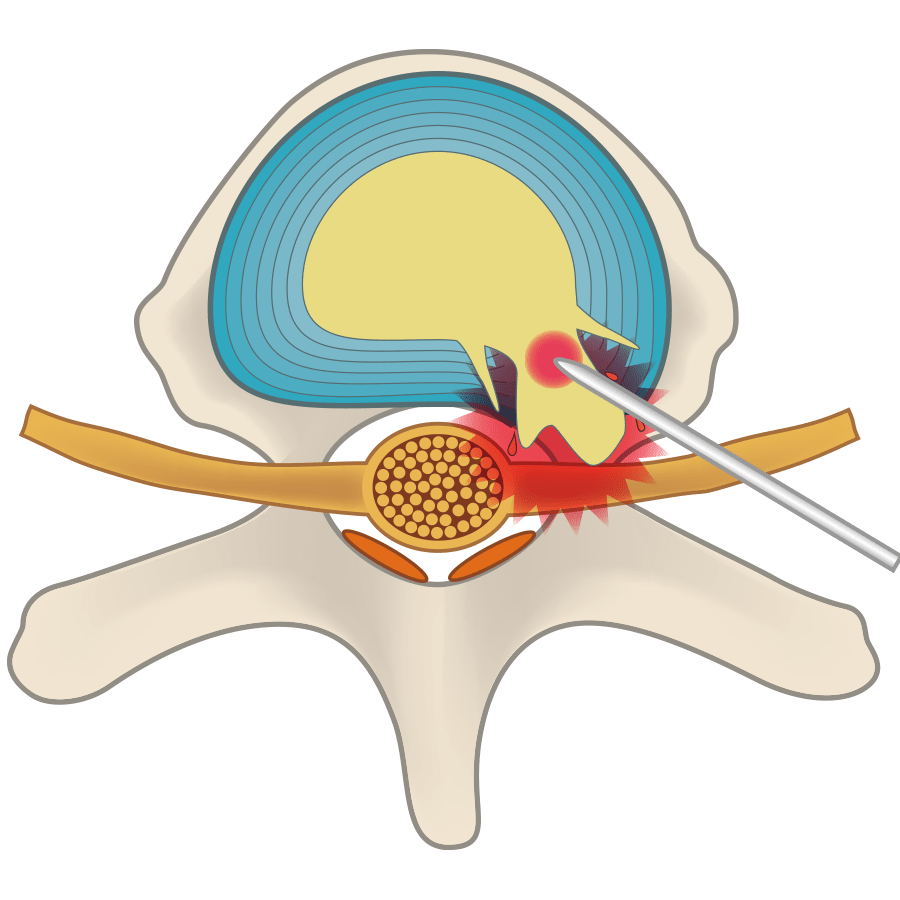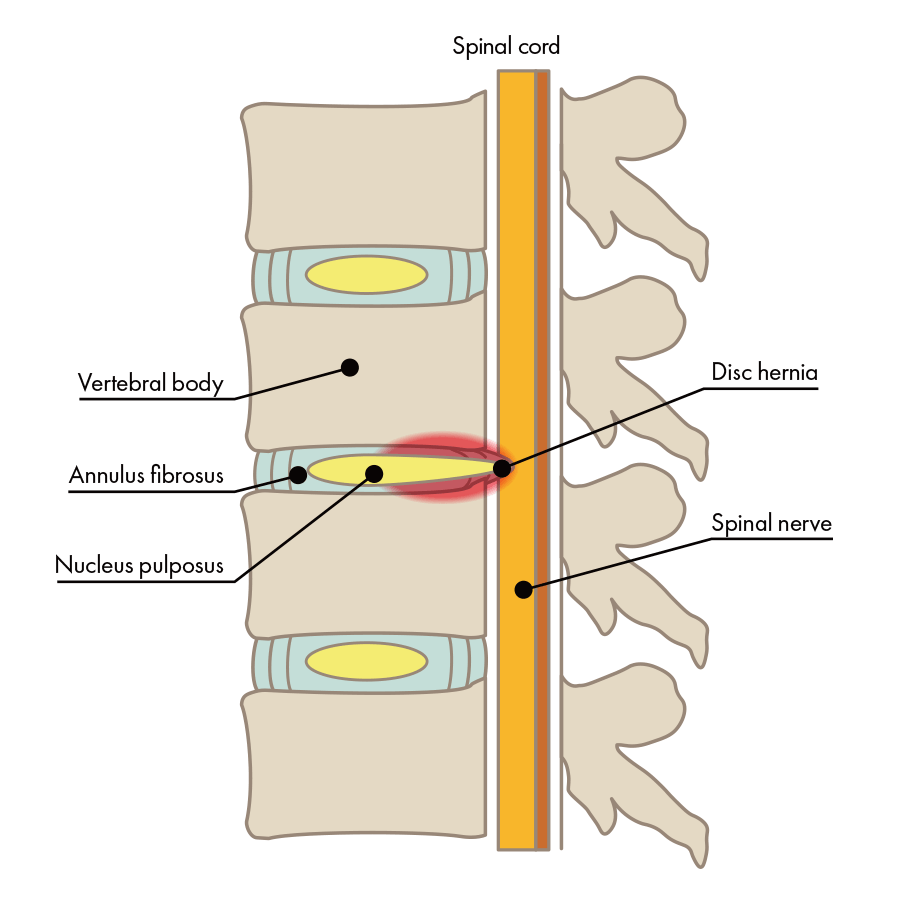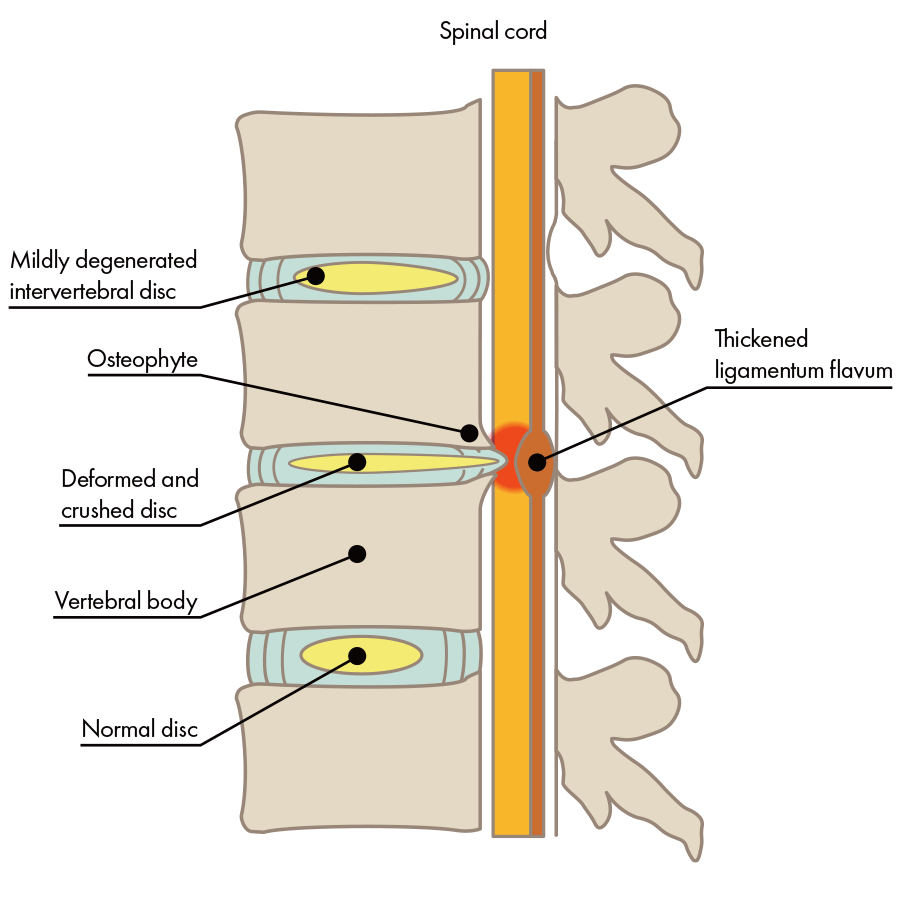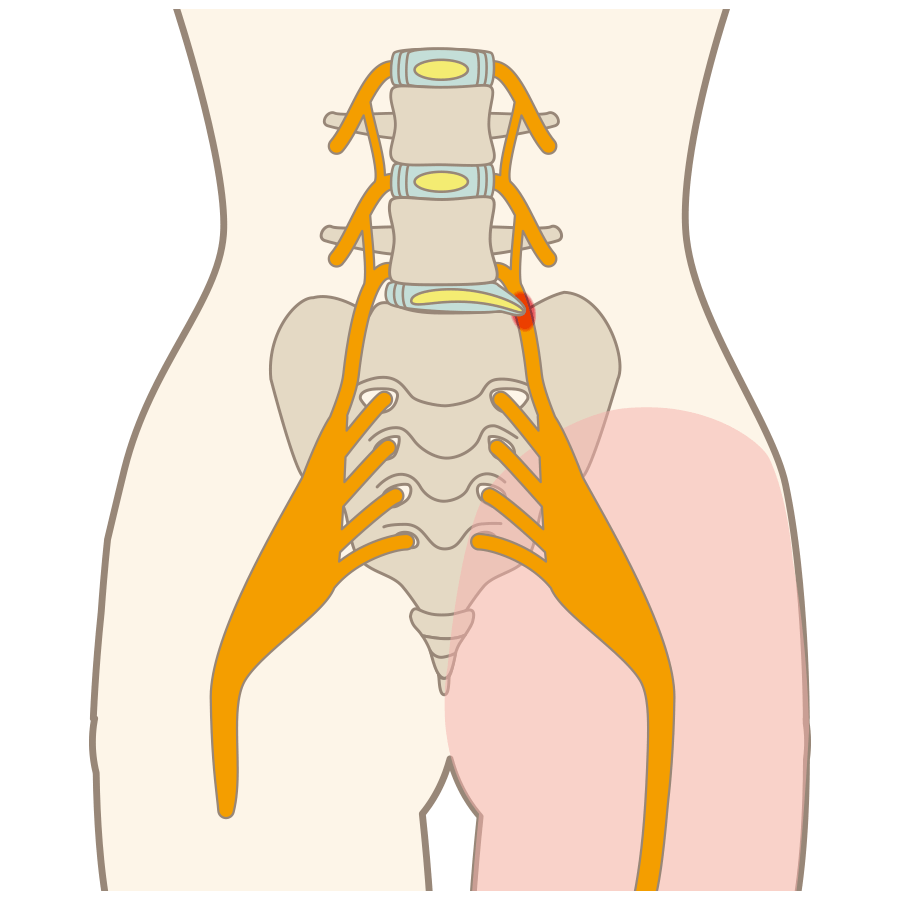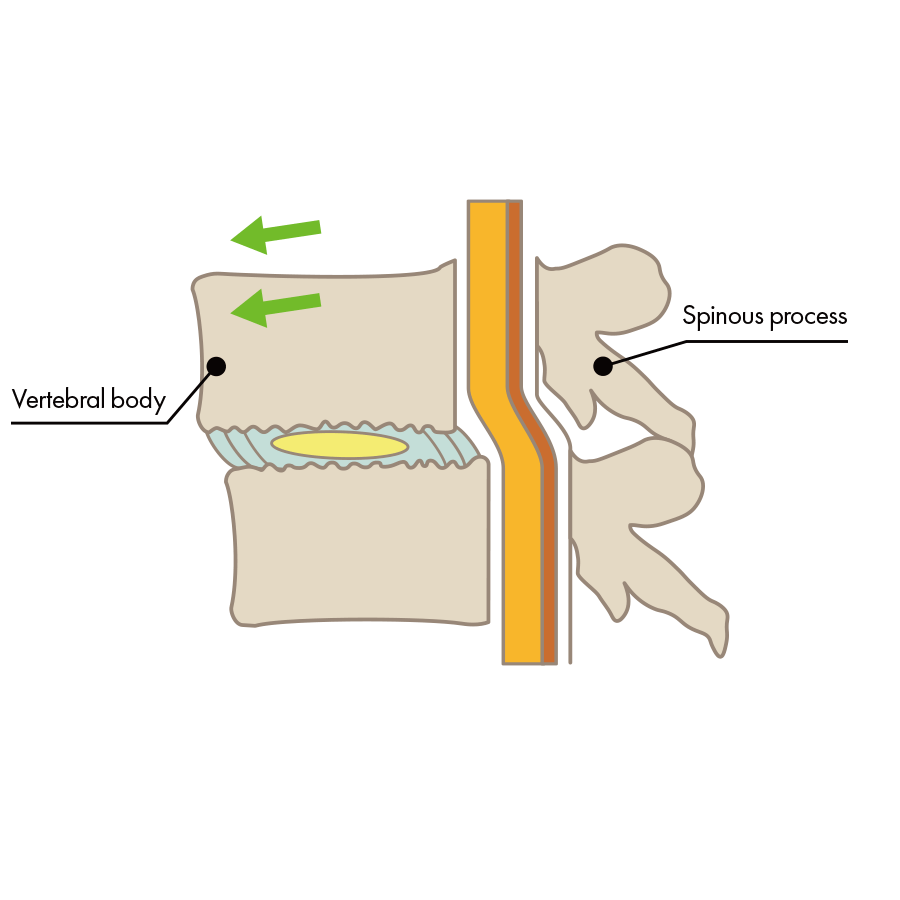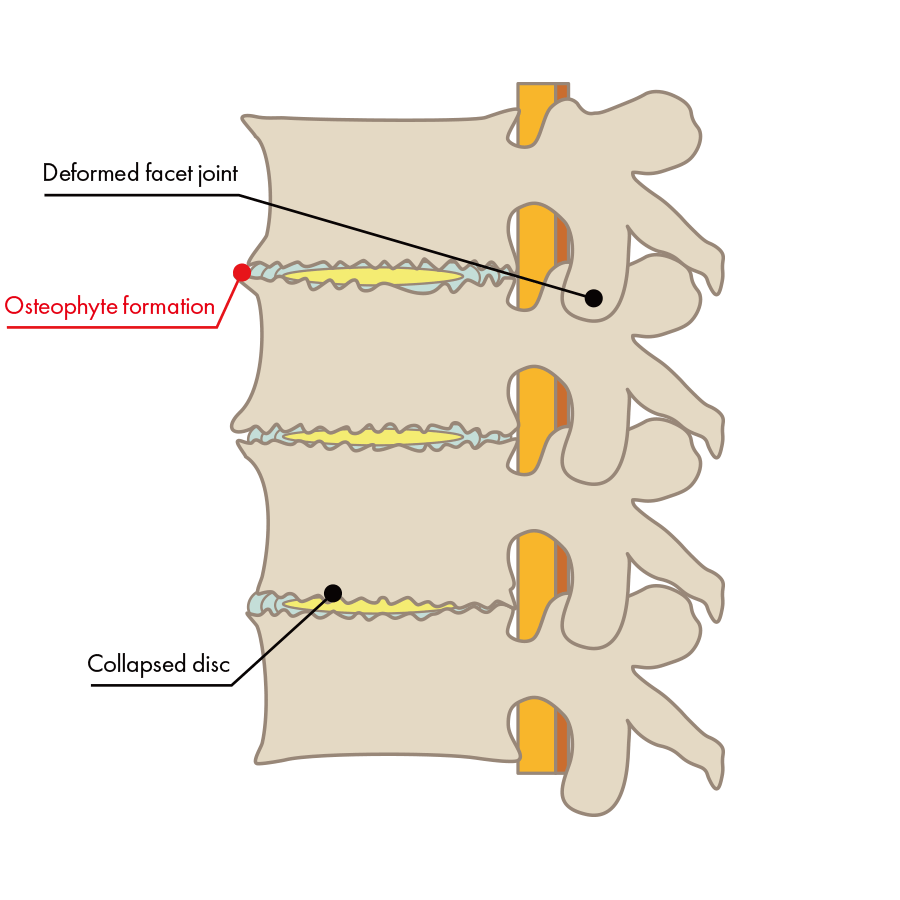Treatment Overview
About Treatment at Our Clini
What is an intervertebral disc?
Intervertebral Disc
The intervertebral discs are located between the vertebrae of the back and act as a cushion for the vertebrae above and below.
At the center of the disc is the nucleus pulposus (composed of a jelly-like material that consists of mainly water), which is contained in the ring-shaped annulus fibrosus, constituted of fibers.
The intervertebral discs have a very high water content so as to prevent any strain on the upper and lower vertebrae, which are supported by this flexible cushion-like area. They make possible the bending and twisting motions in the backbone. When these discs protrude and touch a nerve, symptoms like back pain and sciatica may occur.
Illustration
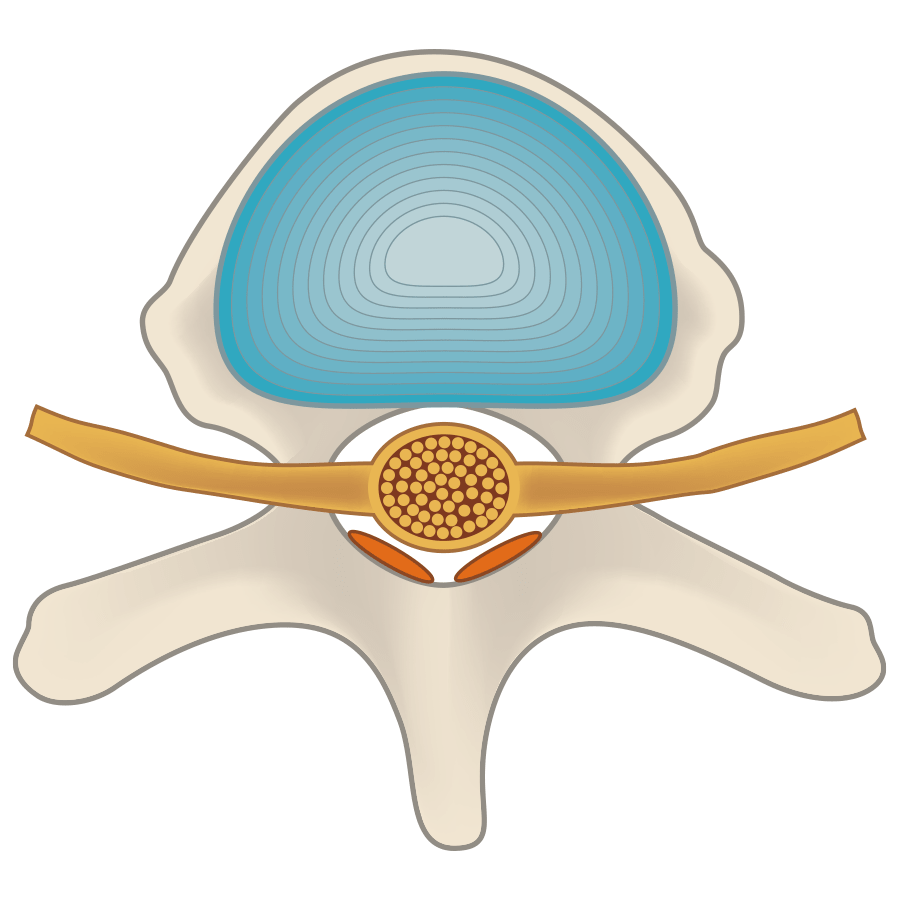
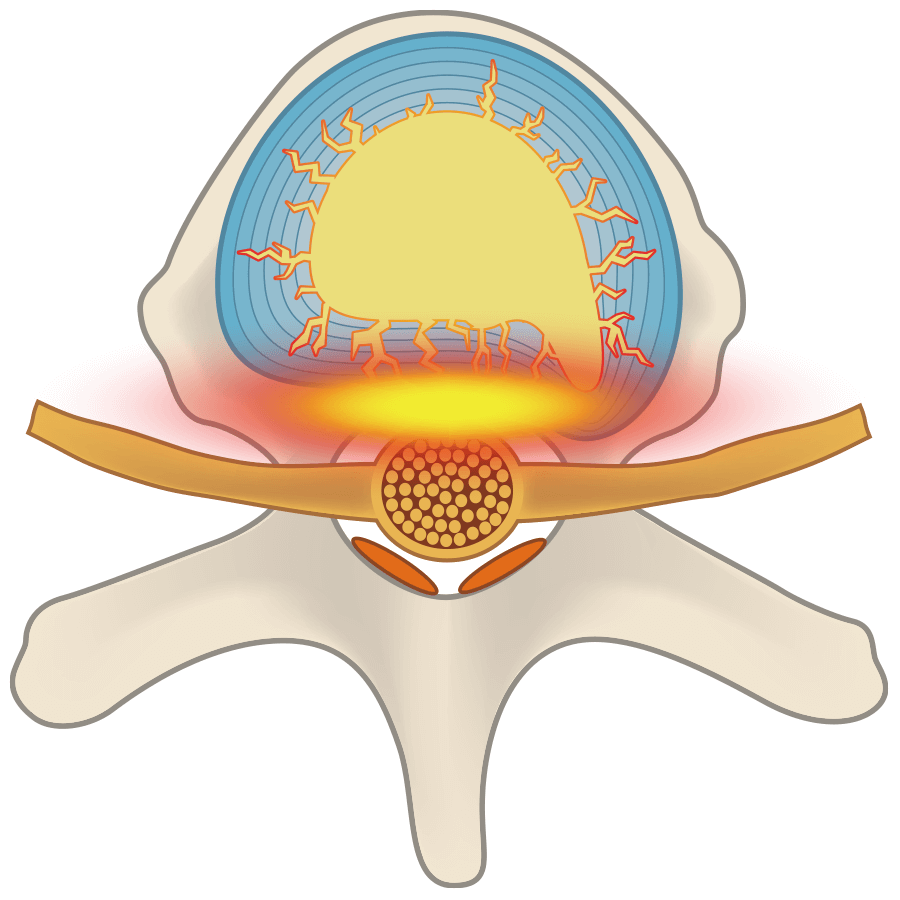
Treatment Overview
The Discseel
Discseel® Procedure
Discseel® Procedure was developed by an American surgeon by the name of Dr. Kevin Pauza, after caring for hundreds of patients who were made worse following their spine surgery. The treatment aims to seal tears in herniated vertebral discs and help them regenerate and recover their, allowing permanent relief of back pain. Dr. Pauza holds a series of 16 patents for a device and Discseel® biologic that support the treatment. Dr.Nonaka has been licensed to perform the Discseel® Procedure in 2018, and more than 2,880 patient have undergone the treatment in our clinic since then. At present, approximately 20 doctors, including physicians from Harvard and Boston Universities are using the Discseel® Procedure to treat their patients in the USA. Dr. Nonaka is the first physician trained to perform the Discseel® Procedure in Japan.

-
The PLOT Method
(Laser And Ozone)Percutaneous Laser and Ozone Treatment

-
The PODT Method
(Ozone)Percutaneous Ozone Disc
Treatment
-
The PLDD Method
(Laser)Percutaneous Laser Disc
Decompression
Targeted Conditions
There are various causes of lower back pain, and depending on the cause, symptoms could be slightly different for each patient. Pain or numbness radiating from the lower back to the calves, might indicate spondylolysis, inflammation of the sciatic nerve, or intermittent claudication. When consulting with the doctor about your back pain, be sure to describe exactly how it hurts and where else do you have symptoms. In our clinic we offer non-surgical outpatient treatment for back pain that has less burden on the body and is suitable for elderly patients. Patients who consider undergoing surgical treatment at other hospitals are also welcome for consultations.
-
Disc Herniation

-
Spinal Canal Stenosis

-
Sciatica

-
Spondylolisthesis

-
Disc Degeneration

-
Lumbar Spondylosis

Frequently Asked Questions
-
- Q
-
About Differences in Recurrence Rates for Our Outpatient Treatment vs. Surgery
- A
-
Surgery is generally conducted under general anesthesia, using a ventilator. The spine is shaved and sometimes secured with screws. Also, because the pain is intense, narcotics are used; however, older patients who may lack physical strength can find rehabilitation delayed while they are in a bedridden state after surgery. For those who have had internal medical conditions (diabetes, emphysema, angina, stroke), there is some danger of infection in the area of the screw, pneumonia, heart attack, stroke, or other complications. Likewise, there is a danger of nerve damage even for healthy people. Even with a relatively simple herniated disc removal operation, paralysis appears in a percentage of patients. Since all treatment at our clinic is performed with local anesthesia just by inserting a needle of 0.8-1.0 mm thickness, patients can be treated safely regardless of whether they are older or have an internal medical condition. Our treatment takes about the same toll on the body as a tooth extraction would. We also use a fluoroscope to make sure the inserted needle does not come into contact with nerves. Our fluoroscope utilizes a device, similar to what is used in cardiac catheterization, that can provide continuous, high-resolution illumination, and thorough consideration is given to safety. In rare cases, the inserted needle touches a nerve, and numbness may temporarily result, but nerve damage on the level of subsequent complications does not occur because the needle is so small. Our director has done approximately 1,500 intervertebral disc treatments, but there has not been a single case of nerve damage.
-
- Q
-
How much of a scar will be left after the procedure?
- A
-
We do our treatments with a 0.8mm needle, so the scar will for the most part be unnoticeable the next day.
-
- Q
-
About the Amount of Time Until You Can Expect to Feel the Effects of Our Outpatient Treatment vs. of Surgery
- A
-
Because surgery is a physical treatment that removes physically deformed bone and tissue, you can expect improvement in leg pain after about 1-3 weeks. After the outpatient treatment for low back pain done here, too, you will gradually continue to improve with time. There are individual differences when it comes to the Discseel® Procedure, but since it is a straight-to-the-root treatment that improves symptoms by repairing damage and regenerating the intervertebral disc that was the cause of spinal disease, it may take a maximum of about 6 months for that intervertebral disc tissue to regenerate.
- HOME/
- Treatment Overview

